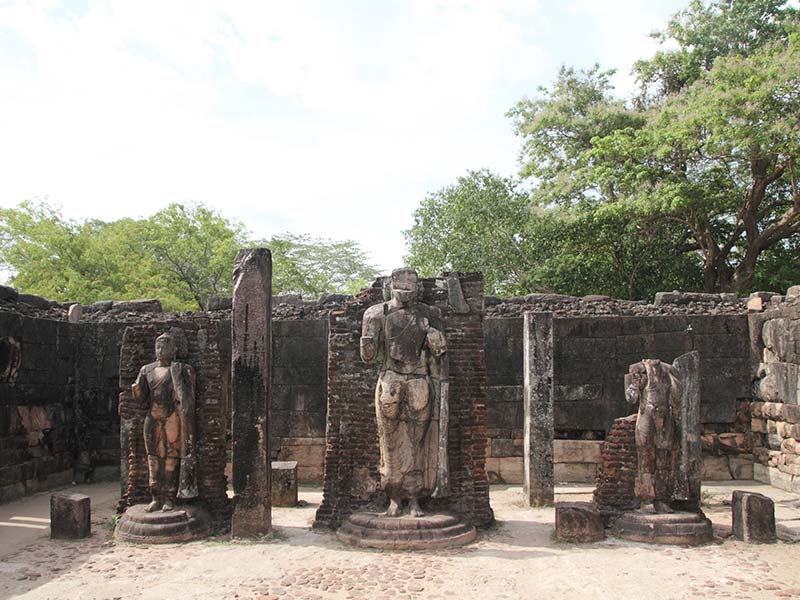Hetadage borrows its evocative name from its very construction design. “Heta” means sixty, and it may have contained sixty relics and images of the Buddha, thus functioning as both an important relic chamber and an image house. The other explanation for its name is that it was built in sixty days, slightly less likely considering the time it takes for one to do stonemasonry. The building belongs to the Polonnaruwa Kingdom and is rather well-known among the multitude of other historical places in Sri Lanka. However, the exact builder of the place is unknown and it might be either the great Parakramabahu I or even Nissanka Malla.
The latter is notorious for marking off others’ achievements as his own, while the former went on a mad building spree in Polonnaruwa during his reign.
It lies in proximity to the other major suffix –‘dage’ buildings, the Atadage and Polonnaruwa Vatadage. The entrance of the Hetadage faces the latter of these, situated in the south. The former building lies to the west.
The Hetadage has two floors. Much of the building must have been made of wood during its time as a complete work in the 11th Century AD but all that remains is the stonework and some parts which still preserve the original bricks. It is thought that the relics would have been placed in the topmost floor. The lower floor is entirely made of stone, while the roof might certainly have been wood and tiles. There are some examples of the finer art of the time, including a beautiful moonstone and two Naga guardian stones standing erect at the entrance. In the inner chamber of the building are three standing Buddha images, all brutally damaged. There were once sixteen stone pillars in this section of the structure but now only three half-destroyed ones remain.
Written by Vasika Udurawane for Travel Lanka Compass



0 Comment